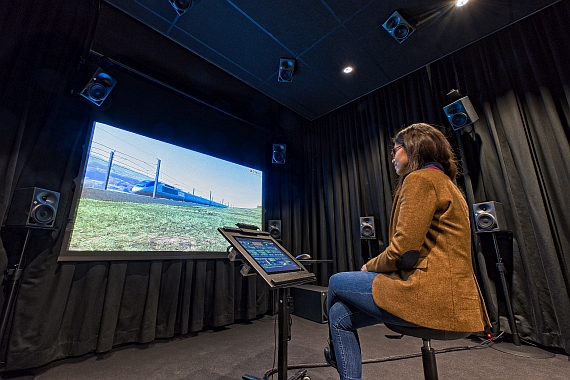Sound Perception & Noise Effects
Urban areas are growing in size and population. This goes along with an increase in noise, particularly due to intensive traffic, which in turn has negative health impacts. These impacts should be alleviated by promoting a better sound environment. To support this goal, a detailed understanding of the human perception of and reaction to sound as well as the ability to predict them is a prerequisite.
Therefore, we perform psychoacoustic studies, making use of our high-quality research facility AuraLab as well as our competences in auralization. The realistic, high-quality auralizations, a key element to our experiments, can be used for systematic variation of the characteristics of sound signals, but also to evaluate "future sounds" produced e.g. by novel aircraft designs. By additionally presenting visual information, also visual-acoustic interactions such as the effects of the visibility of the noise source or of green recreational spaces on sound perception and noise effects can be studied. The results can be used to quantify noise beyond common noise metrics (as the latter are insufficient to predict noise effects in detail), to identify particularly annoying acoustic characteristics of different sound sources, to study the perception of specific sounds or whole soundscapes, as well as to investigate noise effects on cognitive performance and physiological reactions.
Besides the activities in laboratory experiments, we closely collaborate with epidemiologists, socioacousticians and sleep researchers to shed light to the impact of noise on humans on a larger scale, contributing our profound understanding in acoustics, modelling, auralization and perception.
The results may be used to inform governmental agencies with science-based solutions for legal noise abatement or urban soundscape design (also "Klangräume"), to estimate the effects of noise on a population level (Zurich Aircraft Noise Index, ZFI), but also for "impact-driven noise control", i.e. to optimize sound sources with respect to their impact on humans instead of mere acoustic metrics.



-
Share
